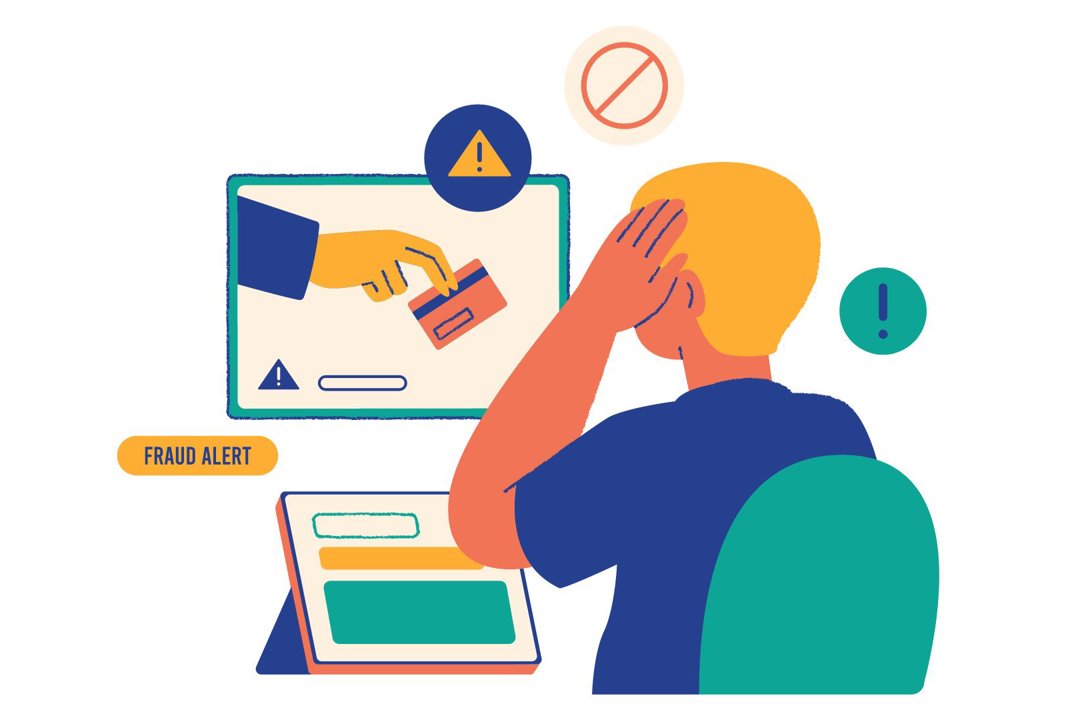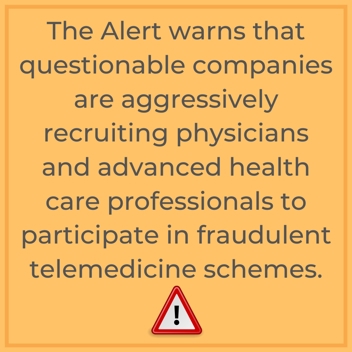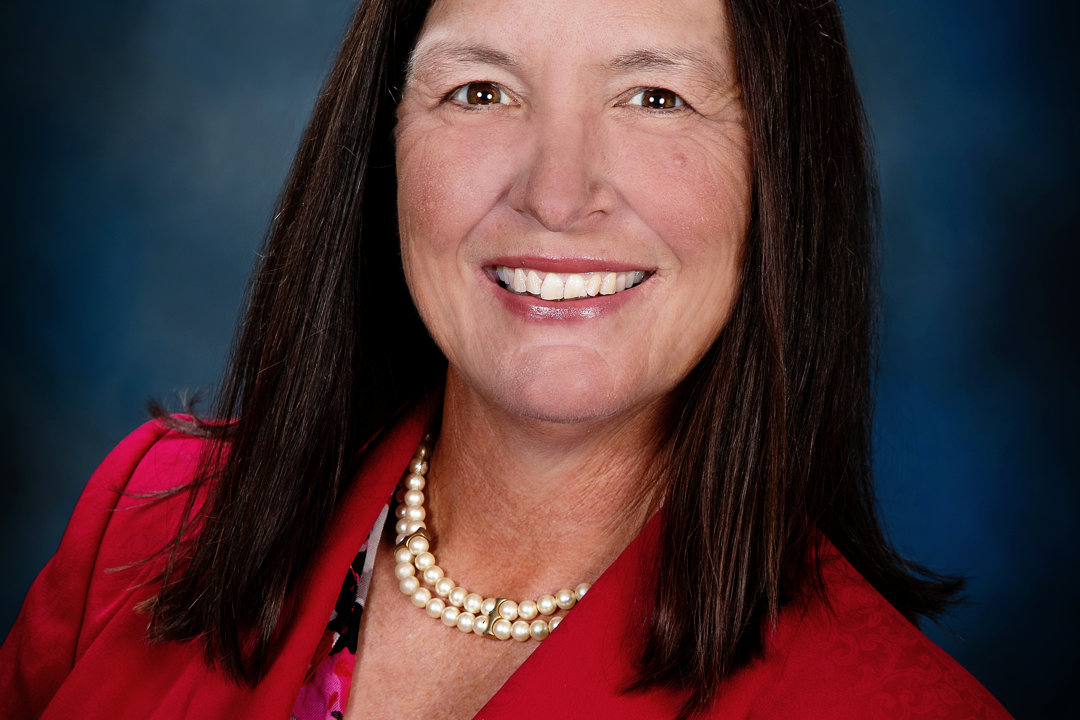
OIG Issues Telemedicine Fraud Alert for Medical Practices
The OIG shares red flags that practitioners can look for to help them avoid becoming unwittingly entangled in these telemedicine fraud schemes.
While telehealth expansion during the pandemic has been beneficial for patients and clinicians alike, the relaxed regulations and increased reimbursement opportunities have also attracted bad actors who have devised a variety of telemedicine fraud schemes. The Office of the Inspector General (“OIG”), in charge of fighting fraud, waste, or abuse in Medicare, Medicaid, and other federal programs administered by the U.S. Department of Health and Human Services, has been actively investigating these schemes for several years.
The OIG recently issued a warning to physicians and advanced health care professionals about these fraudulent telemedicine schemes. The warning comes in the form of a Special Fraud Alert and is based on valuable information the OIG has gathered over two years of investigations.
 The Alert warns that questionable companies are aggressively recruiting physicians and advanced health care professionals (collectively, “practitioners”) to participate in fraudulent telemedicine schemes. The schemes involve conduct that violates the federal anti-kickback statute, the False Claims Act, and other federal criminal laws. In the Alert, the OIG shares red flags that practitioners can look for to help them avoid becoming unwittingly entangled in these schemes.
The Alert warns that questionable companies are aggressively recruiting physicians and advanced health care professionals (collectively, “practitioners”) to participate in fraudulent telemedicine schemes. The schemes involve conduct that violates the federal anti-kickback statute, the False Claims Act, and other federal criminal laws. In the Alert, the OIG shares red flags that practitioners can look for to help them avoid becoming unwittingly entangled in these schemes.
To protect yourself, read the summary of the Alert below and carefully screen any business proposals you receive from telemedicine and telemarketing service companies. Participation in these fraudulent arrangements can expose practitioners to civil liability, criminal prosecution, and/or administrative action by the Centers for Medicare & Medicaid Services (“CMS”). Since 2019, the OIG and the U.S. Department of Justice have partnered to investigate and prosecute numerous telemedicine schemes alleged to have cost the government billions.
Most recently, in a July 2022 Press Release, the agencies announced the filing of criminal charges against 36 defendants, including physicians, physician assistants, and nurse practitioners. At the same time, CMS announced that it took administrative actions against 52 practitioners involved in similar schemes.
How the Schemes Typically Work
Most cases involve the payment of kickbacks to practitioners who, in return, are expected to sign orders for expensive, medically unnecessary items or services. In many cases investigated by the OIG, the orders were for cardiovascular or cancer genetic testing, durable medical equipment (DME), or expensive topical creams.
Although the particular facts of each case differ, a typical scenario unfolds like this:
- The telemedicine company obtains lists of Medicaid or Medicare beneficiaries (“patients”) and pays telemarketers to cold call these individuals.
- The telemarketers use deceptive tactics to convince “patients” to accept prescriptions for things they don’t want or need, such as genetic testing, DME, or wound creams.
- The telemedicine company pays practitioners to perform a “telemedicine consult.”
- The “consult” involves the practitioner signing a pre-filled order for an item or service, such as DME, testing, or medication.
- The practitioner generally has limited, if any, interaction with “patients” and does not review medical records, conduct an exam, or determine medical necessity.
- The items or services ordered are medically unnecessary.
- The Telemedicine company (or lab who bought practitioner’s order from telemedicine company) uses the practitioner’s order to submit a fraudulent claim for reimbursement to Medicare or Medicaid.
- “Patients” often do not even receive the testing results, medication, or DME.
Red Flags that May Signal Fraudulent Activity
Honest practitioners may believe they could spot these schemes a mile away, but bad actors who recruit practitioners often use language and terms that make their proposal sound less suspect. For example, they may try to legitimize the payments by using terms like “payment per review,” “audit,” “consult,” or “assessment of medical charts.”
When considering business proposals from telemedicine companies, the OIG recommends that practitioners use heightened scrutiny, exercise caution, and stay alert for the following “suspect criteria” that may signal a high risk of fraud and abuse:
- Source of patients – The “patients” were identified or recruited by the Telemedicine Company, telemarketing company, sales agent, recruiter, call center, health fair, and/or through internet, television, or social media (advertising for free or low out-of-pocket cost items or services).
- Lack of “patient”-practitioner contact – The practitioner lacks sufficient contact with or information from the “patient” to meaningfully assess whether items or services ordered are medically necessary. For example, the “medical records” the telemedicine company provides to the practitioner may contain only cursory patient demographic information or a medical history that lacks sufficient clinical information.
- Volume-based compensation – The practitioner’s compensation is based on the volume of items or services ordered or prescribed. This may be characterized by the company as compensation based on the number of purported medical records the practitioner reviews.
- Limitations on Insurance Accepted - The telemedicine company only furnishes items and services to Federal health care program beneficiaries and does not accept insurance from any other payor. Alternatively, it claims to only furnish items and services to individuals who are not Federal health care program beneficiaries but may in fact bill Federal health care programs.
- “Specializes” in one product/service – The telemedicine company only furnishes one product or a single class of products (e.g., DME, genetic testing, diabetic supplies, or various prescription creams). This arrangement potentially restricts practitioners to predetermined treatment options.
- No Follow Up – The telemedicine company does not expect or provide the practitioner with the information needed to follow up with “patients.” For example, if genetic testing was ordered, the practitioner does not receive the results.
By remaining alert for these red flags, practitioners will likely be able to recognize and avoid becoming involved in fraudulent activity.
MICA’s Risk Management Consultants are ready to provide more about how to protect your practice from telemedicine fraud and answer any questions about medical liability risk. You can reach a Consultant Monday – Friday 8:30am – 5pm MST at 800-352-0402 x 2137, 602-808-2137, or rm_info@micainsurance.com.
1 For more details, read telemedicine case summaries published by the Department of Justice.
2 Justice Department Charges Dozens for $1.2 Billion in Health Care Fraud.

